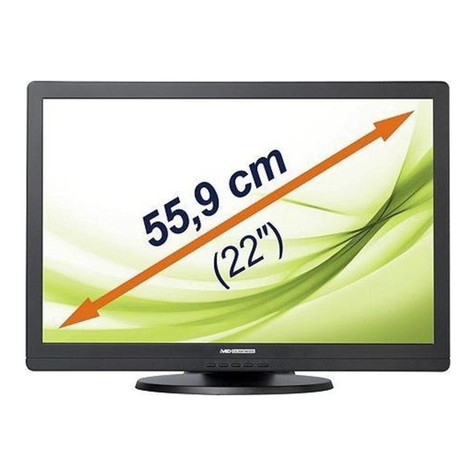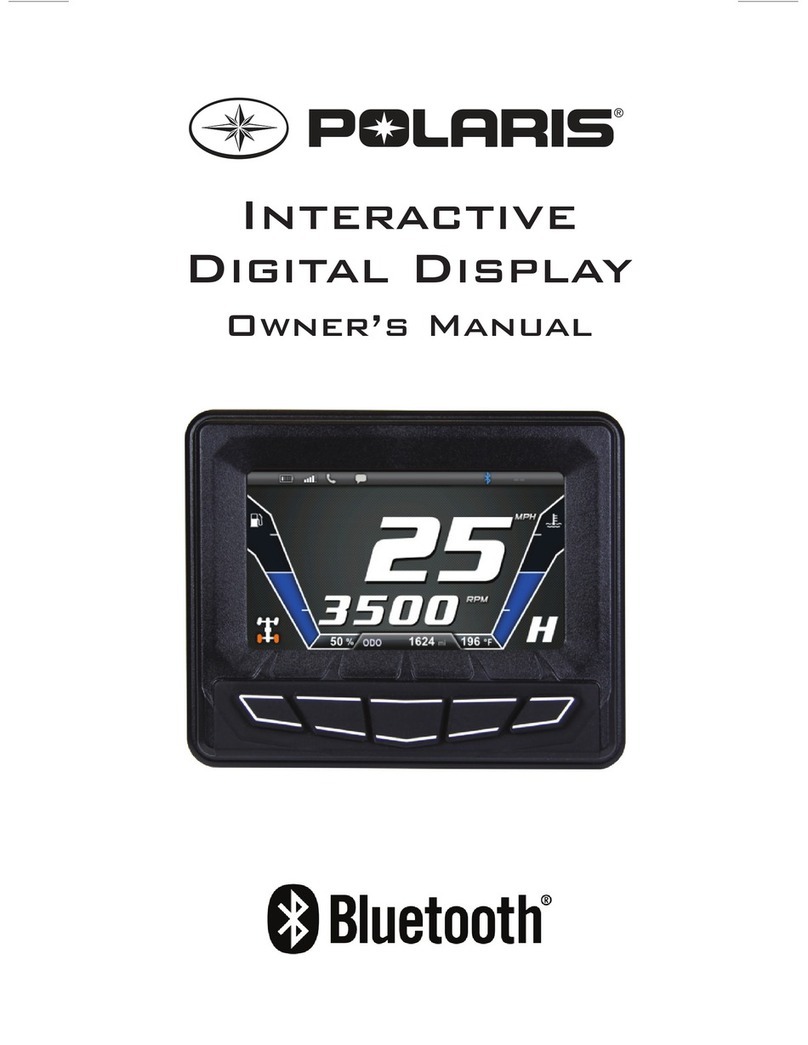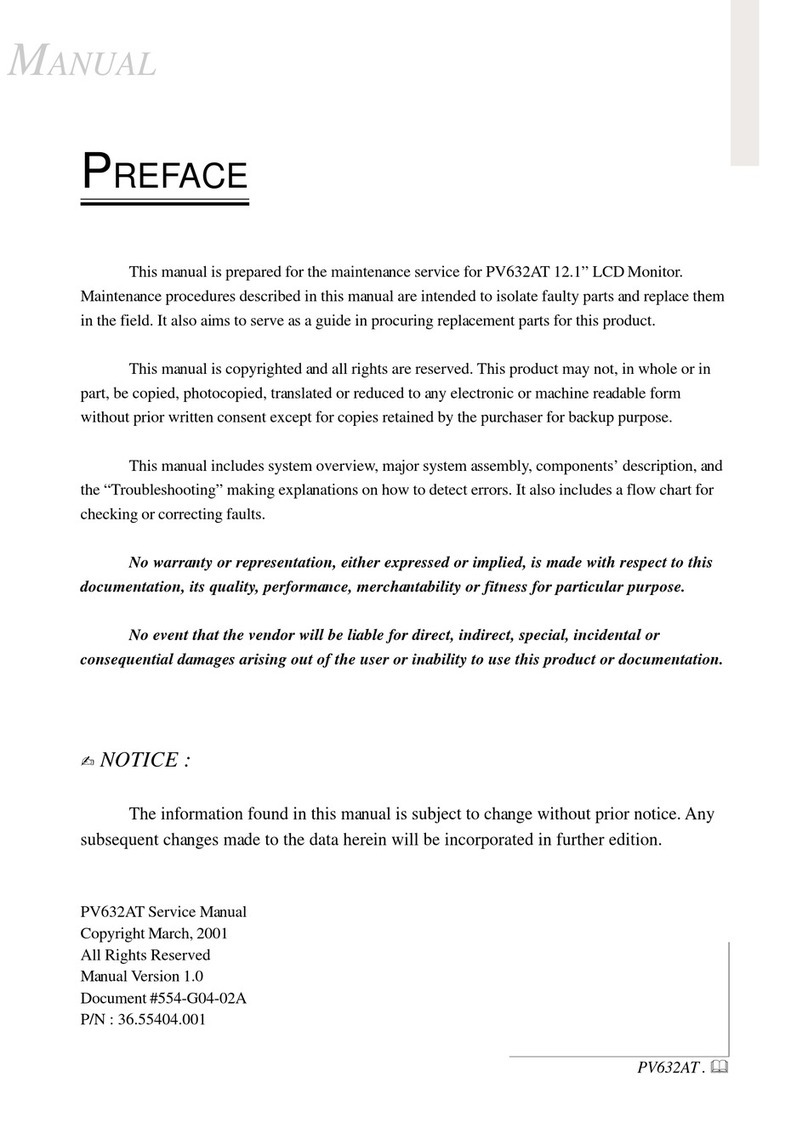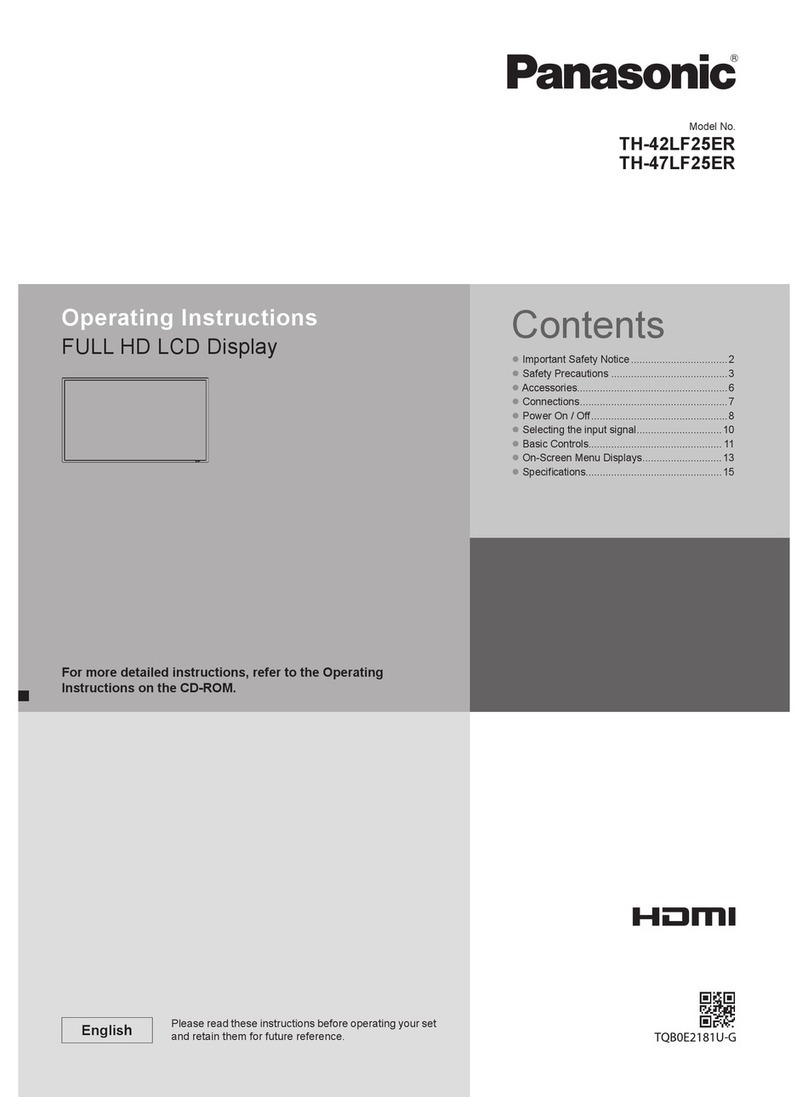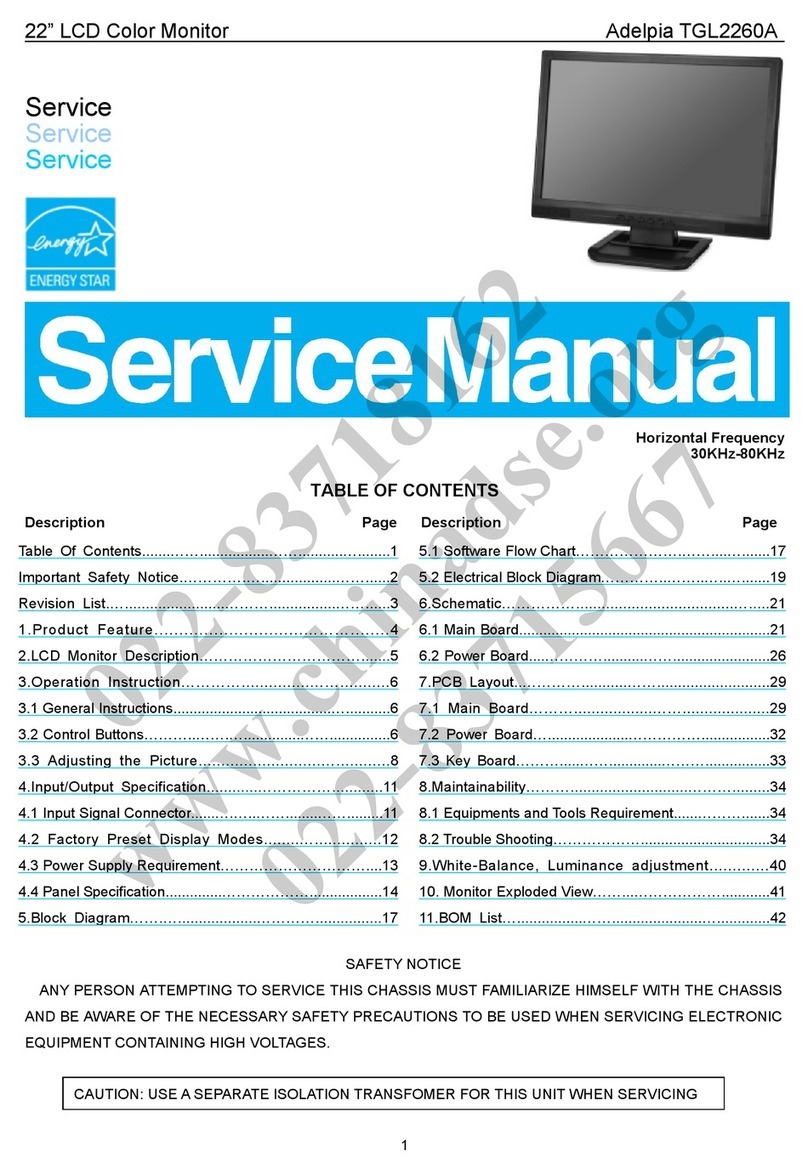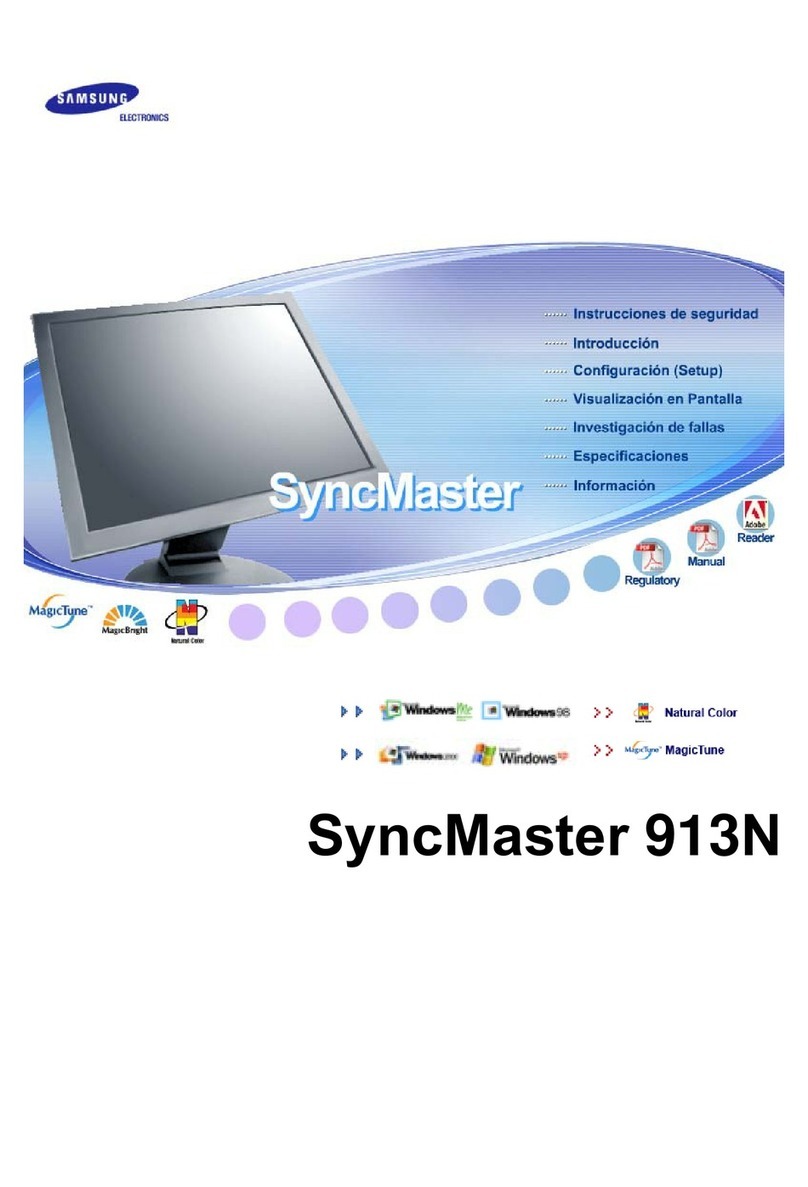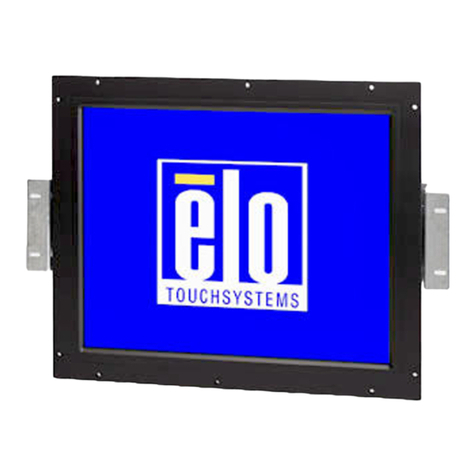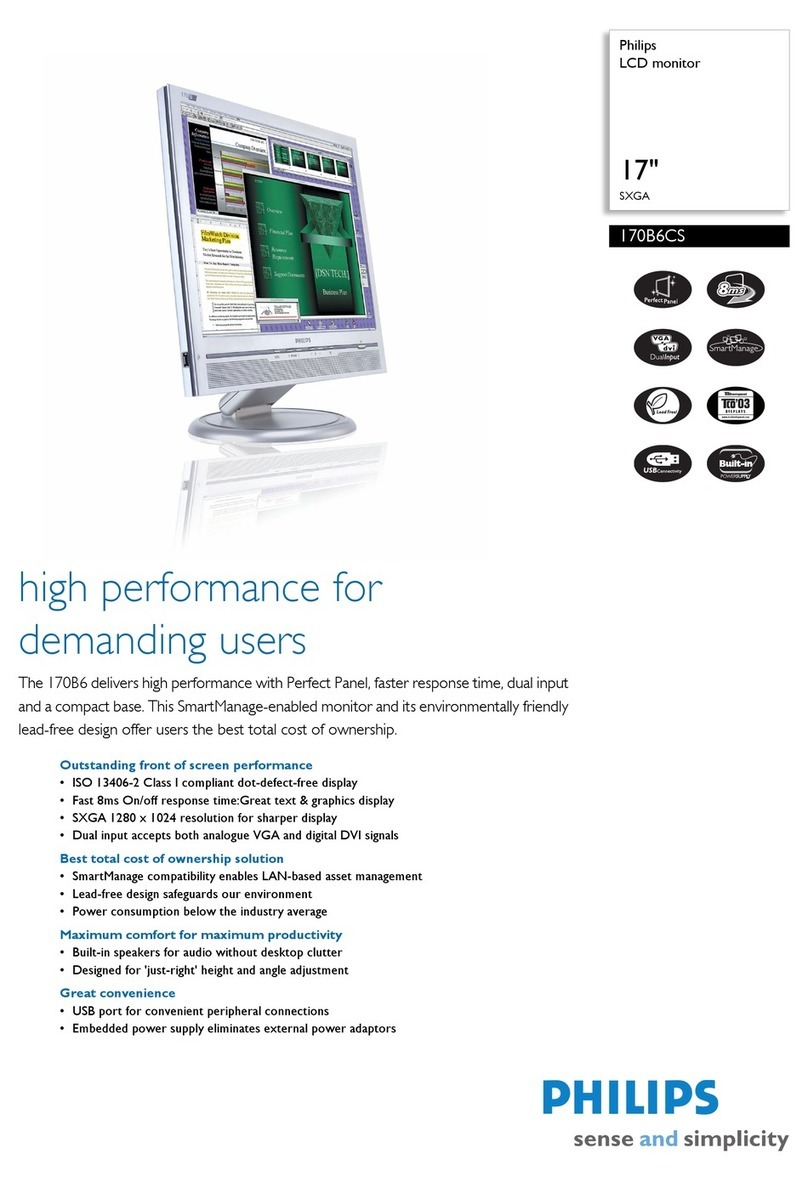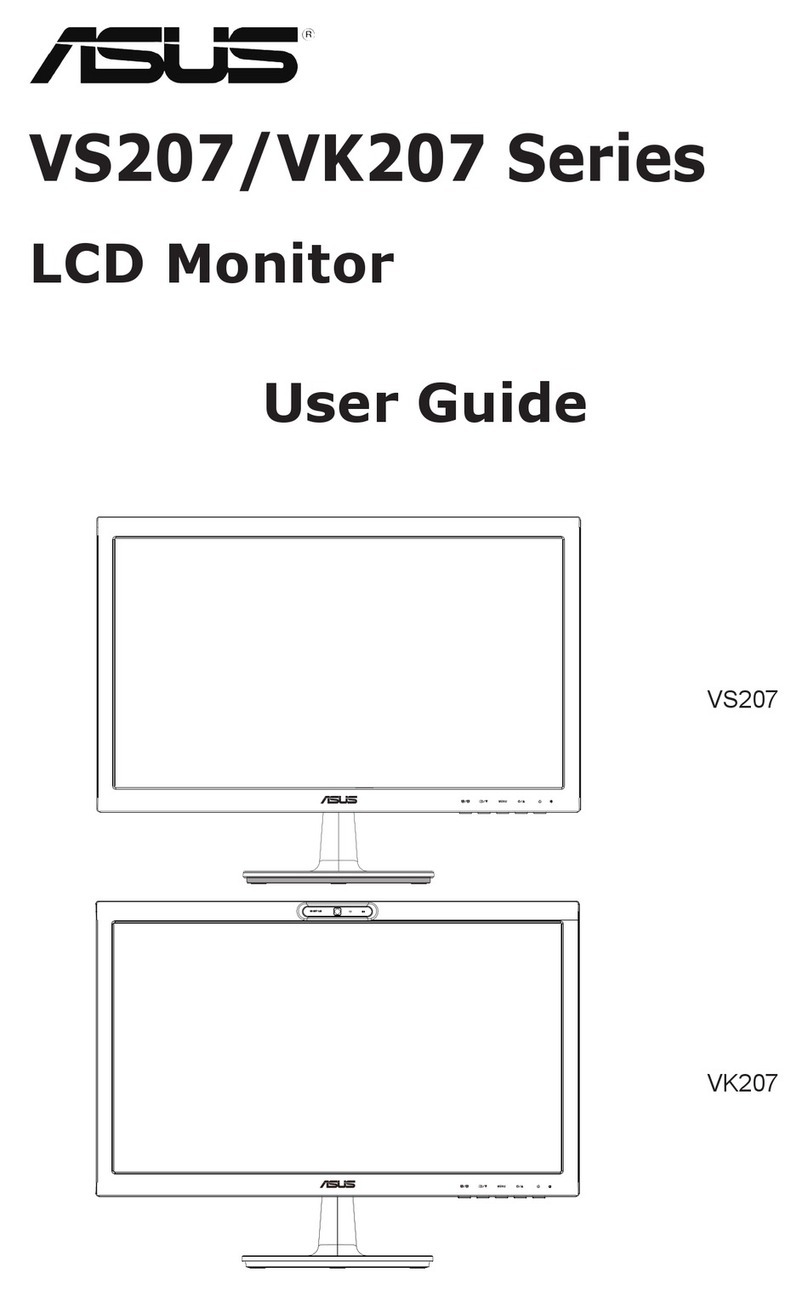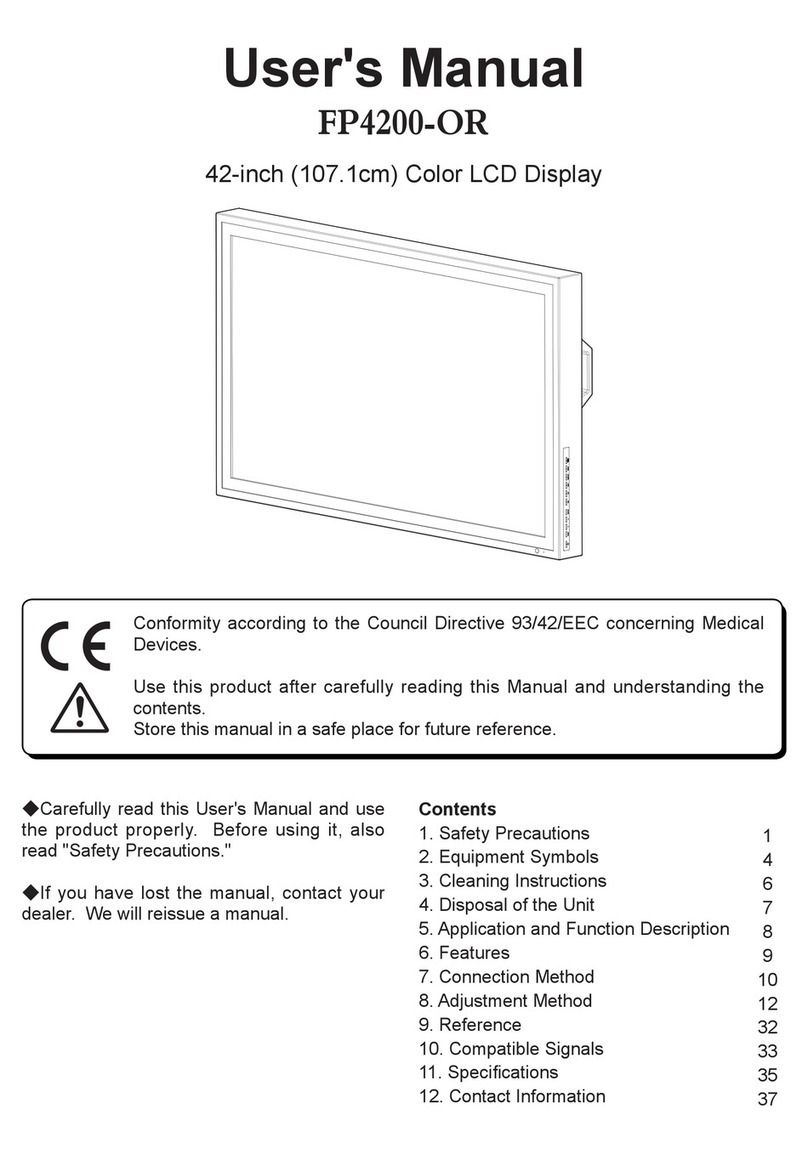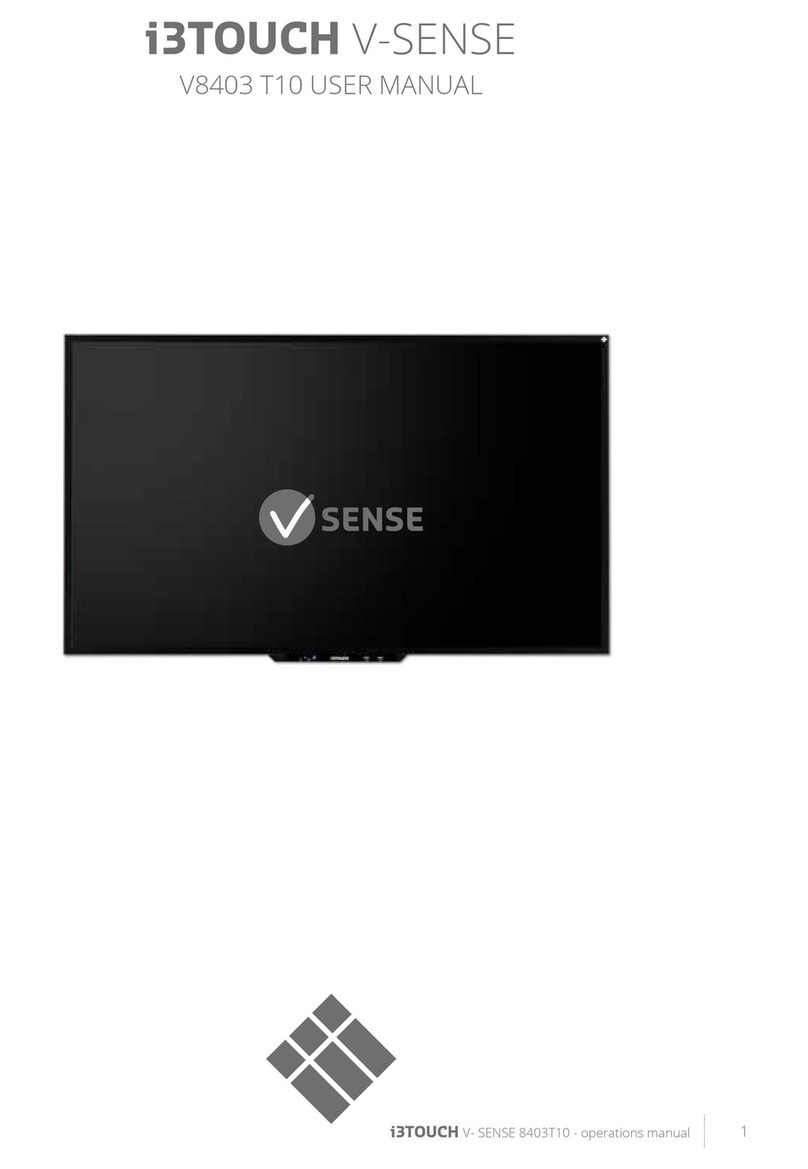JENCO 1671 User manual

OPERATION MANUAL
THE JENCO MODEL 1671
DUAL DISPLAY BENCHTOP
INSTRUMENT
pH - ORP (REDOX) - CONDUCTIVITY
JENCO ELECTRONICS, LTD.
MANUFACTURER OF PRECISON INS

1
GENERAL DESCRIPTION
Model 1671 is two instruments in one enclosure with separate inputs, separate
displays, and separate millivolt recorder outputs for pH and conductivity. The pH
section can also display mV reading for Oxidation Reduction Potential (ORP
Redox) and Ion Specific Electrodes (ISE).
FO UR MODES O F OPEARTIO N
1. pH, continuous update of pH value
2. mV, continuous update of basic mV signal
3. pH-autolock, automatically holds pH display when stabilized
4. mV-autolock, automatically holds mV display when stabilized
AUTOMATIC ELECTRODE SENSING
When using pH or ORP electrodes with built in temperature compensation such as
Jenco’s 6000E series, internal software recognizes the temperature signal and
selects the “ATC” (AUTOMATIC TEMPERATURE COMPENSTAION) mode.
Likewise, attachment of Jenco’s model 6000A / temperature probe automatically
places the instrument in the ATC mode, whenever such a signal is not present, the
instrument immediately switches to its MAN (MANUAL TEMPERATURE
COMPENSTAION) mode. The front panel display continuously indicates the
current status of temperature compensation (ATC or MAN) as well as the
temperature being used to calculate pH.
INITIAL INSPECTION
Carefully unpack the instrument and accessories. Inspect for damage in shipment.
If any damage is found, NOTIFY YOUR JENCO REPRESENTATIVE
IMMEDIATELY. All packing materials should be saved until satisfactory

2
operation is confirmed.
FRONT PANEL CO NTROLS AND INDICATORS
(REFER TO FIGURE 1)
1. The left half of the front panel contains the display and the range/ Selector
switches for the Conductivity metering function. The ON/OFF toggle switch
for the conductivity function located on the rear panel, lower left hand
side.(REFER TO FIGURE 2) Must be on in order to utilize the conductivity
function. Conductivity measurements can be made only with AC power
applied.
1) The LCD display window indicates the present conductivity value.
2) Two LED annunciators located to the right of the display indicate
whether the reading is us or ms.
3) The labeling and meaning of the Conductivity range selection switches is
as following:
A
B
C
D
E
0 to 19.99 uS/cm
0 to 199.9 uS/cm
0 to 1999 uS/cm
0 to 19.99 mS/cm
0 to 199.9 mS/cm
(Note: 1000 us=1ms; S=Siemens=mhos/cm2)
2. The right half of the front panel is dedicated to pH, mV and temperature. The
ON/OFF membrane switch for these functions is located on the front panel,
top row. pH, mV. and temperature measurements can be made either with AC
power applied or with the internal batteries. Access to the battery
compartment is provided on the bottom panel of the instrument. The labeling
and function of the membrane switches is as follows. Right half of the front
panel consists of the following.(REFER TO FIGURE 1)
4) pH/Temp/mV LCD display
5) pH touch keys. There are 8 membrane switches and their labeling and

3
function are as following:
A) ON/OFF Alternate presses of this membrane switch turn the
pH/mV/Temp section on and off. Setup and calibration information
will be retained in memory when the instrument is turned off
provided that batteries are installed.(REFER TO FIGURE 4)
B) CLEAR Resets the microprocessor, clears memory, and
momentarily tests all LCD segments. This is the first step in the
recalibration process.
C) DIGIT Selects tens, units, or tenths digit of temperature display.
Use this switch in conjunction with the COUNT switch to set the
sample temperature manually. DIGIT and COUNT are disabled
when “ATC” is illuminated.
D) COUNT Increments the flashing digit after the DIGIT switch has
been pressed. DIGIT and COUNT are disabled when “ATC” is
illuminated.
E) MODE Seguentially selects the four operating modes namely; pH,
mV, pH-Autolock, and mV-Autolock.
F) STAND Used to compensate (calibrate) the instrument to the pH
electrode to be used. Every pH electrode has its own characteristic
offset and slope. STAND is used to compensate for offset. THE
STAND switch is active only when the “STAND” indicator is
flashing. Refer to the calibration section of this manual for further
explanation.
G) SLOPE Used to compensate (calibrate) the instrument for the pH
electrode to be used, The SLOPE switch compensates for electrode
slope characteristics and is active only when the “SLOPE” indicator
is flashing. Refer to the calibration section of this manual for more
information.
H) MEASURE Used to begin making measurements after the
calibration process is completed and/or to make the next

4
measurement when the display is held in the “Autolock” mode

5
REAR PANEL CONNECTIONS AND CONTROIS
(REFER TO FIGURE 2)
The rear panel is logically divided into two rows. The upper row pertains to pH,
mV, and temperature functions. The lower row is dedicated to conductivity. The
functions and labelings of the connectors and controls are as following:
1. “3-1”ELECT RODE CONNECTOR Special four pin connector for Jenco
6000E series pH electrodes with built in ATC. When using this type of
electrode, do not attach a separate temperature electrode.
2. REF CONNECTOR This function is seldom used. Modern pH electrodes
are usually the “combination” type, meaning that the reference cell is built-in.
Use the REF input only when using a “half-cell” type pH electrode where the
sample junction and the reference junction are not included in one physical
unit.
3. BNC ELECTRODE CONNECTOR Connect non temperature compensated
pH or ORP/ISE electrode here.
4. ATC PROBE CONNECTOR Suitable for connecting Jenco model 6000A
temperature probe when using non temperature compensated (BNC type) pH
and ORP electrodes.
5. pH ANALOG OUTPUT CONNECTOR This is a millivolt signal which
tracks the pH electrode output within ±0.1%. It is suitable for driving chart
recorders etc, when a permanent record of the process history is desired.

6
6. EARTH GROUND CONNECTOR Convenient connecting point for
grounding the sample to the instrument. It is not necessary to use this
connection unless the readings are unstable due to electrical noises caused by
pumps and heaters etc.
7. CELL ADJUST 10-turn adjustment for conductivity cell variance. Use with
conductivity solution standards in the calibration section of this manual.
8. CELL INPUT CONNECTOR Conductivity cell connector (5-pin DIN).
Jenco accessory models 104 or CT200033 are attached here. (SEE LIST OF
ACCESSORIES)
9. CONDUCTIVITY ANALOG OUTPUT CONNECTOR High impedance
signal suitable for driving chart recorders etc. Voltage output corresponds
with conductivity display as 1mV per count.
10.
FUSE If instrument fails to operate, unscrew fuse cap and test fuse. If
defective, replace with same type 0.5 Amp 250 volt fuse.
11.
AC LINE CONNECTOR Line cord connection. This instrument is capable
of operating on either 115VAC or 230VAC. Standard factory setup is for 115
and a cautionary lable is applied to the rear of the instrument indicating the
voltage setting. To switch voltage, remove the 4 screws on the bottom cover
(REFER TO FIGURE 3) and locate the slide switch on the printed circuit
board near the transformer. The voltage settings are printed on the side of the
switch. Confirm desired setting and replace bottom cover.
12.
ON/OFF CONDUCTIVITY POWER SWITCH Toggle switch for the
conductivity function. AC power source must be connected in order to use

7
this function.

8

9
CALIBRATION / ELECTRODE COMPENSATION-pH
WHEN CALIBRATION IS REQUIRED
1. Upon first use of instrument
2. After changing batteries or AC power failure
3. When changing pH electrodes
4. When pH electrode fails to properly measure known buffer
5. Using an electrode that has not been used for a period of time
MATERIALS REQUIRED FOR CALIBRAT ION
1. Actual electrode to be calibrated
2. Buffer solutions 4, 7, and 10
3. Distilled water for rinsing electrode
4. Celsius thermometer or ATC electrode
5. Four clean beakers or other suitable containers
TECHNICAL THEORY REGARDING “CALIBRATION”
While the following adjustments are made upon the instrument itself, the actual
process involves compensating the meter’s sensitivity and software algorithm for
the present status of the specific electrode to be used. Therefore, whenever you
change electrodes, you must re-calibrate. pH electrodes deteriorate with use and
with time, therefore they should be verified using known fresh buffer solutions
before important sample measurements are made. The following process is a two
point calibration which enters the electrode’s offset and slope into memory.
Setting of the offset is done at pH 7 (called STAND throughout this manual);
while the slope is set at either pH 4.01 or 10.01 (called SLOPE in this manual).
Choose the slope buffer according to whether your sample measurements are more
likely to be acidic (4.01) or alkaline (10.01).
Buffer solutions, especially alkahne buffers, are subject to absorbtion of CO2from
the air. They should be stored in tightly sealed glass containers when not in use
and replaced frequently.

10
pH CALIBRATION PRO CEDURE
1. Prepare the necessary buffers. If Automatic Temperature Compensating
electrode is used, correct temperature will be automatically displayed.
Otherwise (ATC light is OFF, MAN light is ON), ensure that temperature
display matches buffer temperature.. Use DIGIT and COUNT switch to set
correct temperature as necessary.
2. 1) Press CLEAR, wait for STAND to start flashing
2) Rinse electrode in distilled water
3) Immerse electrode in buffer 7
4) Press STAND; STAND will stop flashing WAIT will start flashing
5) Observe display for a few seconds; WAIT should stop flashing, SLOPE
should start flashing. If ERR-n is displayed, refer to Error Codes section
3. 1) Rinse electrode in distilled water
2) Immerse electrode in buffer 4 or buffer 10 as desired
3) Press SLOPE; SLOPE will stop flashing, WAIT will start flashing.
4) Observe display for a few seconds; WAIT should stop flash; STAND,
SLOPE, pH and AUTOLOCK should be on. The indicated pH will be
the last buffer used adjusted for temperature
4. Instrument is now ready for use in pH-Autolock mode. Press MEASURE to
make another pH-Autolock measurement; or press MODE to select
continuous pH measurement. Additional presses of the MODE switch will
cycle the instrument through all four of it’s measurement modes, namely
mV-Autolock , mV, pH-Autolock, pH.

11
mV CALIBRATION PROCEDURE
The mV and mV-Autolock functions of this instrument are not subject to user
“calibration” in the same sense as pH. All pH, ORP, and ISE electrodes produce
millivolt signals. In the pH mode, the instrument assumes that the attached
electrode is intended for pH. It then interprets the mV signal, corrects it for
temperature, and computes the results in terms of pH. In the mV mode, the
instrument makes no assumptions and displays the electrode signal directly.
Interpretation is left to the user. The mV mode is useful for comparative studies,
trend analysis, and with the help of chemical handbooks, calculation of ionic
concentration. The mV mode is also useful for evaluating the output of a pH
electrode in case there is some doubt about it’s performance. The mV reading
accuracy of the instrument itself can be checked using an electronics laboratory
type precision millivolt generator.
.
CONDUCTIVITY CALIBRATION PROCEDURE
Conductivity calibration is accomplished by measuring a standard solution of
known conductivity using the specific conductivity cell that will be used in
practice. The CELL ADJ control on the rear panel of the instrument is rotated
causing the display to indicate the proper value.(REFER TO FIGURE 2)
1. If possible, determine in advance the probable range of conductivity values to
be measured. Consult the following section and carefully prepare the
necessary standard KCL solutions for the measurement ranges of interest.
2. Rinse the conductivity cell with distilled water and immerse in the
appropriate conductivity standard solution.
3. Select the appropriate display range from the front panel of the instrument ,
(A-B-C-D-E) and rotate the ten-turn CELL ADJ control on the rear panel of
the instrument until the display reading matches the table value for that
standard solution.
4. The instrument is now calibrated and ready to make sample measurements.
Repeat the above procedure when changing conductivity cells or changing
ranges.

12
PREPARATION OF KCL CONDUCTIVITY STANDARD SO LUTIONS
1. Carefully measure (in air) 74.55 grams Research Grade Potassium Chloride.
Carefully dissolve KCL in sufficient distilled water to make 1.00 liters. Label
this as 1.0 normal KCL.
2. Measure 100.0 ml of the 1 normal solution and add sufficient distilled water
to make 1.00 liters. Label this as 0.1 normal KCL.
3. Measure 100.0 ml of the 0.1 normal solution and add sufficient distilled
water to make 1.00 liters. Label this solution 0.01 normal KCL.
4. Measure 100.0 ml of the 0.01 normal solution and add sufficient distilled
water to make 1.00 liters. Label this solution 0.001 normal KCL.
5. Measure 100.0 ml of the 0.001 normal solution and add sufficient distilled
water to make 1.00 liters. Label this solution 0.0001 normal KCL.
SETTING OF CELL ADJ CONTROL
Select the appropriate measurement range (A-B-C-D-E) from the front panel and
immerse the conductivity cell in the indicated standard solution at 25.0 . Adjust
the CELL ADJ control on the rear panel of the instrument to display the reading
indicated .Note that the solution temperature is critical. If it is not possible to
maintain the setting at 25.0 , adjust the reading +2% for each 1 degree increase
above 25.0 ; or -2% per degree below 25.0
Solution
1.0 N
0.1 N
0.01 N
0.001 N
0.0001 N
Range
E 0-199.9 mS
D 0-19.99 mS
C 0-1999 uS
B 0-199.9 uS
A 0-19.99 uS
Reading
111.8
12.88
1413
145.0
15.00
*NOTE: Measurements in this range should be interpreted with caution since the
extremely low conductivity values are readily subject to distortions from external
sources such as equipment contamination.
ERROR CODES

13
ERR-1 Cannot calibrate pH 7.00 with this setup, check buffer solution,
electrode, cable, connectors.
ERR-2 Cannot calibrate pH 4.00 or pH 10.01 with this setup. Check buffer
solution, electrode, cable, connectors.
ERR-3 Measurement temperature greater than 100.0 or less than 0.0 .
Correct the error and measure pH again. Possible temperature sensor
failure.
ERR-4 Buffer temperature less than 0.0 or greater than 60.4 . Correct the
error and re-calibrate. Possible temperature sensor failure.
ERR-5 Apparent pH less than -2.00 or greater than +16.00. Instrument not
capable of such measurements. Possible electrode failure.
ERR-6 Illegal procedure attempted. Re-read instruction and try again.
SPECIFICATIONS
pH/mV/temperature
RANGE
RESOLUTION
ACCURACY
TEMPERATURE
COMPENSATION
pH
Temp
mV
pH
Temp
mV
pH
Temp
mV
Automatic
Manual
-2.00 to 16.00
0.0 to 100.0
- 999 to + 999
0.01
0.1
1
±0.1%, ±1 digit
±0.5 , ±1 digit
±0.1%, ±1 digit
0.0 to 100.0
0.0 to 99.0

14
Buffer recognition
Buffer temperature range
Buffer temp. comp. table
Electrode slope compensation
Electrode offset compensation
Electrode calibration
End point sensing
Configuration memory
Error condition
Recorder output
Display pH/mV
temperature
Display update
Input impedance
Conductivity
Scale, resolution
Accuracy
Automatic temperature comp
Cell constant
Display
4.01, 7.01, 10.01, pH
0.0 to 60.4
Internal, 0.5 steps
Nominal ±30% at pH 4 and pH 10
Nominal ±90mV at pH 7
Dual point
Automatic locking
Battery backup
Numerical prompt & audio alert
Electrode mV signal ±0.1%
12.5 mm high LCD with pH/mV indicator
7. 5 mm high LCD with indicator
1/2second
±1013
0 to 199.9 mS, 0.1 mS
0 to 19.99 mS, 0.01 mS
0 to 1999 uS, 1 uS
0 to 199.9 uS, 0.1 uS
0 to 19.99 uS, 0.01 uS
±1% f, s., ±2% reading
0to 50 , ±2%
1.0, adjustable
12.7 mm high, LCD

15
GENERAL
power requirements
battery life
dimensions
weight
115/230 V AC
batteries, type AA (6)
20 hours, typical
250⊙240⊙100 mm
9.75⊙9.50⊙3.75 inches
1.3kg, 2.87 lbs
RECOMMENDED ACCESSORIES:
The following probes are available from Jenco for use with this instrument.
Standard cable length is 3 feet. Longer lengths are available on special order.
Electrodes listed here are intended for hand-held laboratory applications. Jenco
can also supply a complete line of industrial electrodes for permanent mounting in
process control and on-line monitoring applications.
pH
600E
600ED
600E-CJ
600E-ORP
6000E
6000ED
6000E-CJ
6000E-ORP
Basic combination pH electrode with 3 foot cable, BNC
connector: no ATC. It is also available with longer cable up to
25 feet on special order. Ag/Agcl reference cell is built-in
eliminating the need for a separate reference cell.
Similar to basic 600E, but features double junction internal
construction. Preferred for longer electrode life, especially
when measuring salt or sulfide contaminated samples.
“Calomel junction” version of the basic 600E. Reference cell
contains Hg2cl2. Recommended for use when test samples may
contain heavy metals or proteins.
Basic ORP (Redox) measurement electrode with 3 foot cable
and BNC connector: no ATC.
Applications similar to basic 600E: ATC is built-in. Cable is
sold separately. Requires 4 conductor shieded cable with 4-pin
connector each end (model 6000C).
Double junction version of 600E
Calomel Junction version of 6000E
ORP (Redox) version of 6000E

16
CONNECTING CABLE:
6000C
6000A
4 conductor cable with shield, 3 feet long. Includes
appropriate 4-pin male and female connectors on each end.
This item is required for use with 6000E series electrodes
when used with model 1671.
External Automatic Temperature Compensation. (ATC)
for pH/ORP. Use this separate ATC probe if using pH
electrodes without internal ATC capability (e. g. Jenco’s
600E series).Otherwise temperature compensation can be
accomplished manually by entering the information via the
Keyboard.
CONDUCTIVITY ELECTRODES:
104
CT200033
Glass bodied cell with platinum elements, internal
temperature compensation, 3 foot cable, 5-pin DIN
connector, Cell constant K=1
Epoxy bodied cell with Carbon graphite elements:
otherwise same as Jenco model 104.

17
WARRANTY
Jenco Instruments, Ltd. Warrants this product to be free from significant deviations in
material and workmanship for a period of 1 year from date of purchase. If repair or
adjustment is necessary and has not been the result of abuse or misuse, within the year
period, please return-freight-prepaid and the correction of the defect will be made without
charge. If you purchased the item from our Jenco distributors and it is under warranty,
please contact them to notify us of the situation. Jenco Service Department alone will
determine if the product problem is due to deviations or customer misuse.
Out-of –warranty products will be repaired on a charge basis.
RETURN OF ITEMS
Authorization must be obtained from one of our representatives before returning items for
any reason. When applying for authorization, please have the model and serial number
handy, including data regarding the reason for return. For your protection, items must be
carefully packed to prevent damage in shipment and insured against possible damage or
loss. Jenco will not be responsible for damage resulting from careless or insufficient
packing. A fee will be charged on all unauthorized returns.
NOTE: Jenco Instruments, Inc reserves the right to make improvements in design,
construction, and appearance of our products without notice.
JENCO INSTRUMENTS, INC.
7968 Arjons Drive, Suite C
San Diego, CA 92126 USA
TEL: 619-578-2828 F AX: 619-578-2886
E-MAIL: jencoi@ix.netcom.com
JENCO ELECTRONICS, LTD.
PO. BOX LINKOU 117
TAIPEI, TAIWAN
TEL: 02 601-6191 FAX: 02 601-7206
E -MAIL : jenc o e @ms 2. hin et. n et
SHANGHAI JENCO ELECTRONICS, LTD.
18 Wang Dong Zhong Road
Sijing Town,Songjiang
SHANGHAI,CHINA
TEL: (86-021)5761-9599 FAX: (86-021)5761-9598
E-MAIL: jenco@public.sta.net.cn
Homepage:http://www.jenco.com.cn
Table of contents

